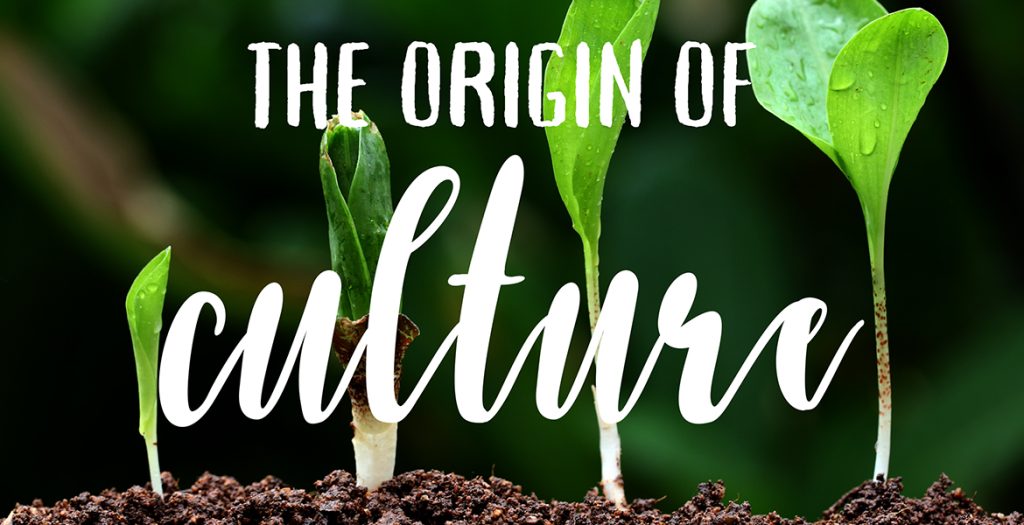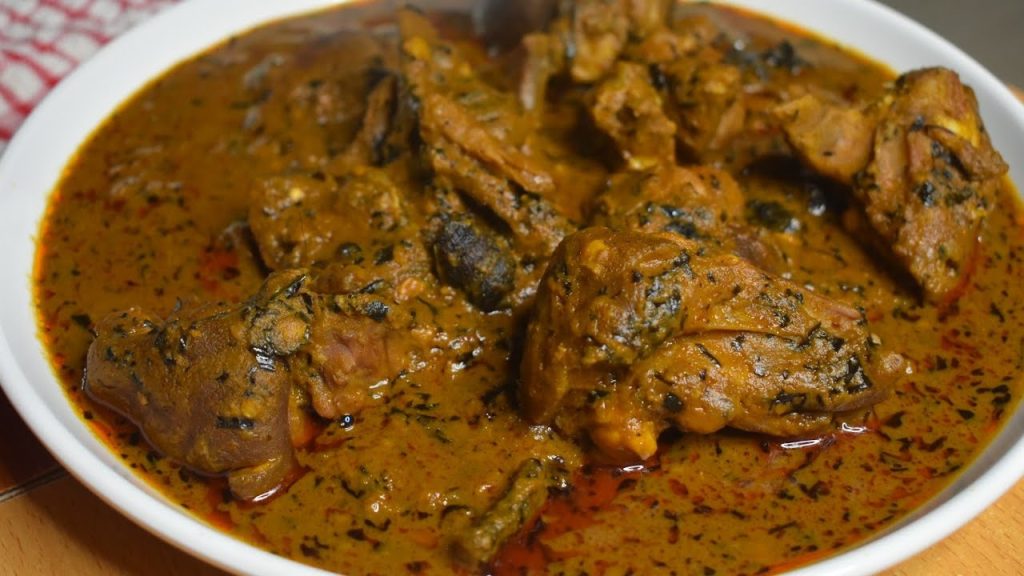How To Prepare The Delicious Abak Atama Soup

Nigerian cuisine is a tapestry woven from the threads of diverse cultures and flavors, each contributing to a vibrant culinary heritage that is both a reflection of the nation’s history and a celebration of its people.
Amidst this flavorful mosaic lies a gem that captures the essence of the Southern region: Abak Atama Soup.
With its roots embedded in the rich cultures of the Efik and Ibibio people, this sumptuous dish offers a glimpse into the history, flavors, and traditions of Nigeria’s southern coastal communities.
Cultural Significance and Origins

The origins of Abak Atama Soup trace back to the Efik and Ibibio people, who reside primarily in the Cross River and Akwa Ibom states of Nigeria.
The soup’s name is derived from its main ingredient, the Atama leaves (Gnetum africanum), which are native to the region and lend the dish its unique flavor and character.
In these communities, Abak Atama Soup transcends mere sustenance; it is a culinary tradition that brings people together, symbolizing unity and the sharing of cherished moments.
This soup often takes center stage during special occasions, celebrations, and gatherings, where its preparation and consumption become cultural and social experiences that bond generations.
Ingredients and Flavor Profile

The heart and soul of Abak Atama Soup lie in its distinctive combination of ingredients, each contributing to a symphony of flavors that awaken the senses.
The primary components include:
1. Atama Leaves:
These tender, dark green leaves are the star ingredient, providing a unique earthy flavor that sets this soup apart.
If Atama leaves are unavailable, spinach or collard greens can be used as substitutes.
2. Palm Fruit Extract:
The rich, velvety palm fruit extract, also known as Banga or palm fruit concentrate, forms the base of the soup.
It not only adds a delightful creaminess but also imparts a deep, nutty essence that characterizes many West African dishes.
3. Assorted Meats and Fish:
A medley of meats and fish, such as goat meat, cow tripe, stockfish, and dried fish, provides layers of textures and flavors, giving the soup its hearty and satisfying nature.
4. Seasonings and Spices:
Ground crayfish and Bigmama Shrimp flavour, ground pepper, and optional ground ukazi (African oil bean) contribute depth and complexity to the dish.
Pepper adds a touch of heat, while crayfish introduces a subtle umami undertone.
5. Red Palm Oil:
This vibrant oil is not only used for frying but also imparts a distinctive orange-red hue to the soup.
Its rich flavor enhances the overall experience.
Cooking Process and Traditions

The preparation of Abak Atama Soup is a labor of love, emphasizing patience and attention to detail.
The process begins with boiling and extracting the palm fruit juice, which forms the foundation of the dish.
Meats and fish are then cooked separately, creating flavorful stocks that infuse the soup with depth.
The palm fruit extract is combined with red palm oil, aromatics, and seasonings, creating a fragrant base.
The Atama leaves, carefully shredded, are introduced to the pot, and the soup simmers gently, allowing the flavors to meld and the leaves to tenderize.
The result is a harmonious blend of ingredients, each contributing its essence to the final creation.
Let’s embark on a culinary journey through the steps of crafting a perfect Abak Atama Soup, exploring the techniques and ingredients that bring this dish to life.
Ingredients
- 2 cups shredded Atama leaves
- 2 cups palm fruit extract
- Assorted meats and/or fish (goat meat and Bigmama goat meat flavour, cow tripe, stockfish, dried fish, etc.)
- 1 medium onion, chopped
- 2-3 tablespoons ground crayfish
- 2-3 tablespoons ground pepper (adjust to taste)
- 2-3 tablespoons ground crayfish
- 1 tablespoon ground ukazi (optional, for added flavor and thickness)
- 2-3 cups water (adjust as needed)
- Salt to taste
- Periwinkles or snails (optional)
- Bigmama Fish Flavour
- Red palm oil (for frying)
Instructions:

1. Prepare the Palm Fruit Extract:
If using fresh palm fruits, boil them until they are soft. Then pound or blend them to extract the palm fruit juice. Strain the juice to remove any chaff or debris.
If using palm fruit concentrate, dilute it with water to achieve the desired consistency.
2. Cook the Meats and Fish:
In a separate pot, cook the assorted meats and fish with chopped onions, seasoning cubes or powder, and enough water until they are tender.
You can use a combination of your favorite meats and fish for added variety and flavor.
3. Prepare the Soup Base:
In a larger pot, heat red palm oil until it becomes clear and loses its raw taste. Add the chopped onions and sauté until they are translucent.
4. Add the Palm Fruit Extract:
Pour in the palm fruit extract and allow it to cook for a few minutes, stirring occasionally to prevent sticking.
5. Add the Meats and Fish:
Add the cooked meats and fish to the pot with the palm fruit extract, including some of the stock they were cooked in. This adds depth of flavor to the soup.
6. Season the Soup:
Add ground crayfish, Bigmama Shrimp flavour, ground pepper, and ground ukazi (if using) to the pot. Adjust the quantity of pepper to your preferred level of spiciness.
7. Cook the Atama Leaves:
Gently fold the shredded Atama leaves into the pot. Allow them to cook in the soup for about 10-15 minutes, or until they are tender and well incorporated.
8. Adjust the Consistency and Seasoning:
If the soup is too thick, you can add water to achieve your desired consistency. Adjust the seasoning with salt and additional seasoning cubes if needed.
9. Finish and Serve:
Simmer the soup for a few more minutes to ensure all the flavors meld together. Abak Atama Soup is traditionally served with a side of plantains or yam. These starchy sides complement the rich flavors of the soup.
10. Enjoy:
Ladle the flavorful Abak Atama Soup into bowls and serve with the plantain or yam on the side. This hearty and aromatic dish is a delight to the senses and a celebration of Nigerian culinary heritage.
Tips and Variations
Spiciness: Adjust the amount of ground pepper to suit your personal preference for spiciness.
Meats and Fish: Feel free to experiment with a variety of meats and fish to tailor the soup to your tastes. Popular choices include goat meat, cow tripe, stockfish, and dried fish.
Thickening: Ground ukazi can be added for both flavor and to enhance the thickness of the soup.
Garnishes: Freshly chopped herbs, such as cilantro or parsley, can be used to garnish the soup before serving.
Side Dishes: Alongside plantains or yam, you can also serve Abak Atama Soup with fufu, a traditional Nigerian staple.
A Culinary Treasure to Savor
As the Abak Atama Soup simmers, it beckons with its inviting aroma, enticing all who encounter it.
When served, it embodies the history, traditions, and warmth of the region. The soup’s lush green hue contrasts with the orange-red palm oil, creating an inviting visual display that speaks to the diversity and vibrancy of Nigerian cuisine.
When a spoonful of Abak Atama Soup is savored, it’s not just the flavors that captivate; it’s the stories of generations, the echoes of celebrations, and the appreciation for the land and ingredients that have shaped its existence.
It’s a culinary journey that transports those who partake to the southern coastal communities of Nigeria, where food is not just sustenance but a means of sharing and connecting.
Preserving Heritage and Nurturing Future
Abak Atama Soup stands as a testament to the resilience of cultural heritage in the face of modernization.
As Nigerian cuisine gains recognition on the global stage, dishes like Abak Atama Soup become ambassadors of tradition, reminding the world of the beauty and depth found within the country’s culinary tapestry.
Whether enjoyed in the homes of Southern Nigeria or appreciated in international kitchens, Abak Atama Soup offers a taste of history, a touch of culture, and a celebration of flavors that transcend borders.
It’s an invitation to savor not just a dish, but an experience—one that embraces the past, enriches the present, and nurtures the future of Nigerian cuisine.
Conclusion
Abak Atama Soup is not just a dish; it’s a celebration of Nigerian culture, a testament to culinary artistry, and a tribute to the flavors of the region.
Mastering the creation of this soul-warming soup is a journey that pays homage to tradition while allowing for personal touches.
As you embark on your Abak Atama Soup adventure, remember that the joy of cooking lies not only in the final product but also in the experience of crafting a dish that brings people together, nourishing both body and soul.
Comments are closed.

One Comment